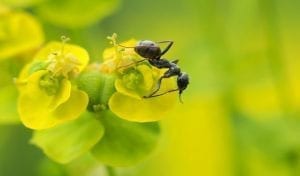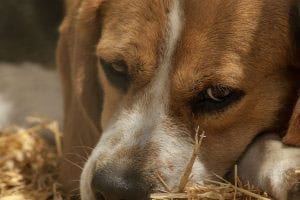Calls to Ban CRISPR
A scientist named He Jiankui recently shocked the scientific world with his announcement that he had created twin “CRISPR babies”. The babies, a result of in vitro fertilization (IVF), had their genomes changed through the DNA editor CRISPR.
Rather than applaud Jiankui, the scientists were quick to point out their concern that the secrecy and timing of his unapproved “experiment” could dash hopes on another front, precluding CRISPR from preventing devastating diseases in the future. (Details are available here.)
Many years before Jiankui created the CRISPR babies, scientists met in California and spoke about their concerns regarding the use of CRISPR in IVF (in vitro) embryos. The consensus was definitely against using the therapy until many questions were answered to the satisfaction of the majority.
One of the main concerns is “germline editing”. If one DNA “letter” is changed in an embryo’s genome, the genetic defect is corrected not only in the embryo but in every descendant of that baby.Therefore, germline editing’s opponents warn of irreversible consequences that cannot be predicted.
Prominent CRISPR experts suggested a moratorium worldwide on the use of CRISPR in reproduction. That call was endorsed by the National Institute of Health which is restricted from backing research projects that apply gene editing to human embryos.
This year an advisory group pulled together by the National Academies of Sciences and Medicine advised that genome-research trials might be allowed, but only after considerable research.
One of the advisors said that this type of research brings about very deep philosophical issues along with new medical concerns. On one hand, it provides opportunities to make corrections during editing but it also allows opportunities for new mistakes.
He suggests that they could inadvertently end up with new problems while attempting to solve other existing problems.
Three Calls to Save CRISPR
Neena Nizar, born in Dubai, remembers an extremely painful childhood and her father attempting to prevent further deformities in her legs by tying her to an ironing board.
As reported in a recent edition of Awesome Capital, doctors were unable to accurately diagnose her condition. Weak cartilage replaced strong bones. Doctors inserted rods in her hips and clamps to keep her bones steady.
Neena is now 41 years of age and living in Nebraska with her husband and two sons who have inherited her disease. Neena’s disease had not been diagnosed at the time they made the decision to have children.
Her first son was born healthy and off to a good start to life. Neena was completely unaware that she carried a mutation. However, when Neena was pregnant with her second child, abnormalities were discovered in the fetus.
By then, Arshaan, her first child, began to show symptoms of the disease. Finally, a geneticist was able to diagnose the two boys. He determined that Neena and her two sons had Jansen type metaphyseal chondrodysplasia.
The disease is caused by a mutation in the PTH1R gene that controls the separation of cartilage and bone. Symptoms occur in arms and legs. Cartilage grows in areas where there should be bone. The patient’s arms and legs become weak, painful and are abnormally short.
Jahan, now age 8 and Arshaan have undergone yearly surgeries, again with rods and pins. As Neena explained, the bones are primarily cartilage so that it seems as if “we are dealing with putty.”
Doctors are unable to explain why second-generation carriers of the Jansen’s mutation experience a more serious disease than first generation carriers. In any event, the boys are in continual pain. At times they must crawl on their hands and knees as they are unable to walk.
Neena, the founder of the nonprofit Jansen’s Foundation, believes firmly that when her sons are older and want to start a family, embryo editing should be available to them.
She is aware that proponents of CRISPR are accused of “playing God.” She said that this does not mean being frivolous and changing a child’s eye color. She explains that it does not change who they are but it will correct a defect that causes long-term pain and suffering.
Andrea Taylor and her husband are carriers of the SLC2A10 gene. The mutations in this gene cause elongated arteries that turn and twist. Vital organs are deprived of oxygen and cause aneurysms. Andrea’s son, Aiden, has arterial tortuosity syndrome (ATS). He inherited one ATS-causing gene from each parent. Aaron, the older son, is disease free.
Included in the series of multiple surgeries Aiden has endured, is the open heart surgery that reconstructed his pulmonary arteries. Aiden has had three heart catheterizations.
ATS is responsible for the death of 40% of children under five years of age who have the disease.
Andrea and her husband were completely unaware that they carried the gene. Also, the odds that they would meet and marry were one in hundreds of millions. But as a result of their union, the chance of their sons having the disease was as high as twenty-five percent.
A Twist of Fate is the nonprofit ATS advocacy group founded by Andrea. She finds it hard to believe that anyone knowing a child will suffer as her son has suffered would pose any objections to germline editing. She cannot understand how the philosophical argument can carry any weight against the suffering of a child.
As for “playing God”, Andrea explains that God endowed us with the knowledge to develop scientific discoveries. If God didn’t want humans to understand science, then why allow humans to acquire such knowledge? If this can be fixed, then why would we not try?
Monica Weldon tries to weigh the objections of “playing God” against watching her son suffering. Her son, Beckett, came into this world with SYNGAP syndrome which is the result of a mutation in the SYNGAP1 gene.
Abnormalities in synapse function and neuronal growth result from a single genetic “misspelling”. This, in turn, causes delays in development, intellectual disability, and various neurological symptoms.
Monica founded the advocacy group Bridge the Gap. Although Beckett appeared normal at birth, he eventually had problems sitting up and learning to speak.
Monica compares embryo editing to correcting spina bifida or any other fetus abnormalities. These operations on a fetus have now become mainstream. She insists that everyone should have the option of seeking help to repair their baby’s gene.
She acknowledges the need for caution but insists that the procedure should not be banned if others do not fully understand a family’s pain and suffering.
About CRISPR
CRISPR/Cas9 means Clustered Regularly Interspaced Short Palindromic Repeats. It is associated with protein 9. Its cost is lower than the current strategies being used to modify DNA, yet it is more efficient.
CRISPR is a bacterial immune system. It’s editing of DNA can be compared to a computer’s “find and replace” when the computer edits a document. The advent of CRISPR in 2012 started a race to hone the tool to be used in gene therapies.
The National Cancer Institute defines CRISPR/Cas9 as a laboratory tool that changes or “edits pieces of a cell’s DNA.” It utilizes an RNA molecule to guide the Cas9 enzyme to a specific sequence of DNA.
Then Cas9 cuts the strands of DNA at that specific point and removes a small piece which causes a gap in the DNA. A new piece can be added.
The NCI notes that CRISPR-Cas9 offers new opportunities in cancer research in the three critical areas of diagnosis, treatment, and prevention. CRISPR-Cas9 is already being tested in many other areas of research.
Where There is an Agreement
Most scientists do agree that the potential immunological consequences of gene editing with CRISPR require exhaustive studies if clinical use is to be advanced.

.jpg)





